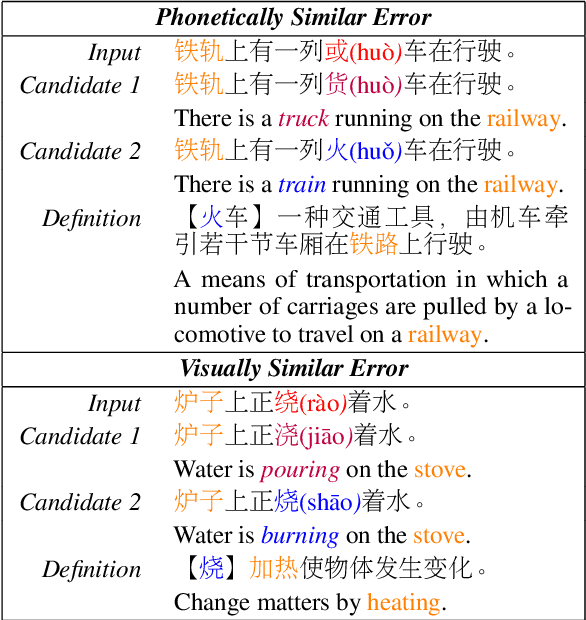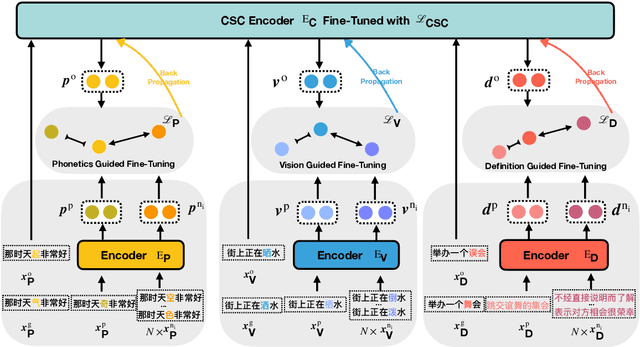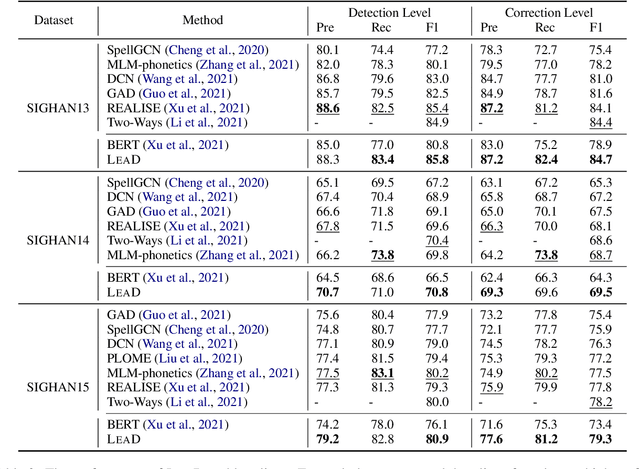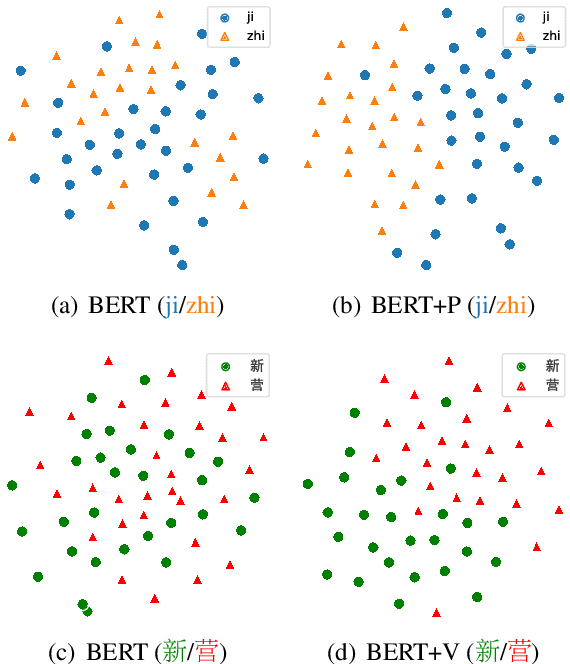Learning from the Dictionary: Heterogeneous Knowledge Guided Fine-tuning for Chinese Spell Checking
Paper and Code
Oct 19, 2022



Chinese Spell Checking (CSC) aims to detect and correct Chinese spelling errors. Recent researches start from the pretrained knowledge of language models and take multimodal information into CSC models to improve the performance. However, they overlook the rich knowledge in the dictionary, the reference book where one can learn how one character should be pronounced, written, and used. In this paper, we propose the LEAD framework, which renders the CSC model to learn heterogeneous knowledge from the dictionary in terms of phonetics, vision, and meaning. LEAD first constructs positive and negative samples according to the knowledge of character phonetics, glyphs, and definitions in the dictionary. Then a unified contrastive learning-based training scheme is employed to refine the representations of the CSC models. Extensive experiments and detailed analyses on the SIGHAN benchmark datasets demonstrate the effectiveness of our proposed methods.
 Add to Chrome
Add to Chrome Add to Firefox
Add to Firefox Add to Edge
Add to Edge